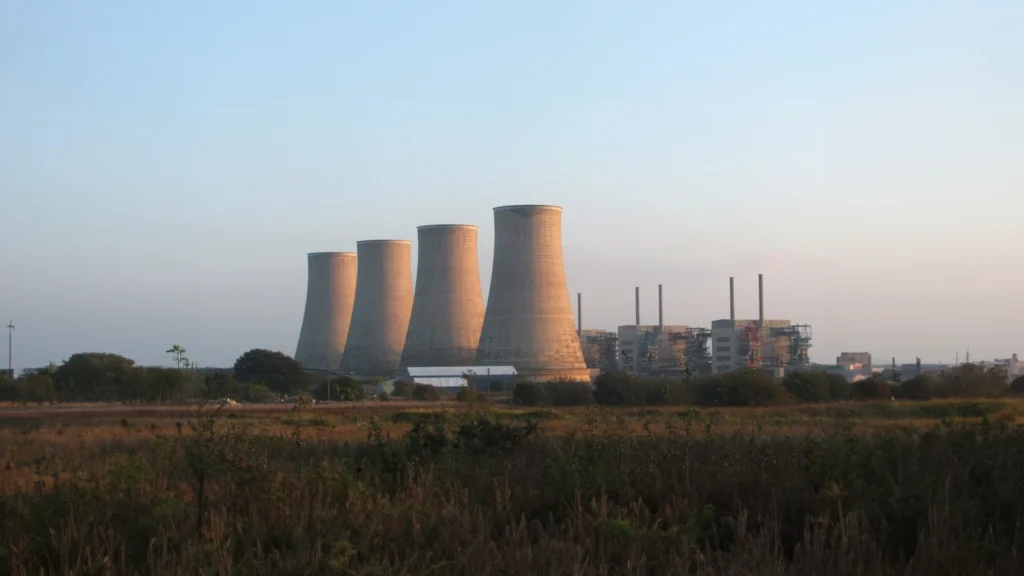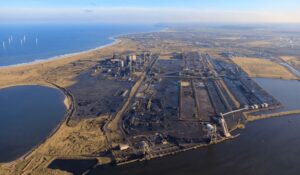Scottish nuclear power station transforms into hydrogen energy hub

The once-powerful Chapelcross Nuclear Plant is embarking on a new chapter producing hydrogen.
Located near Annan, Scotland, just on the Scottish and English borders, the plant is being redeveloped into a green energy hub, with hydrogen production at the forefront of its transformation.
From Nuclear to Net-Zero
Chapelcross, which ceased its nuclear operations in 2004, is now on track to become a major player in hydrogen technology.
The site will host hydrogen production and storage facilities, advanced manufacturing units, and energy campuses – all part of a multi-million-pound project aimed at boosting the local economy and creating high-value jobs.
The transition is part of a broader effort to drive Scotland’s hydrogen ambitions, aligning with the UK’s net-zero carbon targets.
Hydrogen is considered a key energy source for decarbonising sectors like transport, manufacturing, and energy storage.
Collaboration between business and industry
This monumental shift for Chapelcross has been driven by collaboration between public and private stakeholders including The Nuclear Decommissioning Authority (NDA) and Nuclear Restoration Services (NRS).
The NRS are leading the site’s redevelopment, working alongside local authorities, South of Scotland Enterprise (SOSE), and other partners to bring the vision to life.
In August 2024, a masterplan for the site was released, outlining the path toward establishing Chapelcross as a regional hub for hydrogen energy. The plan is expected to not only create jobs but also attract significant private investment into Dumfries and Galloway.
Hydrogen production at Chapelcross
Hydrogen production at Chapelcross is central to the site’s reimagined future. With its existing grid infrastructure and large-scale landholdings, the site is perfectly positioned to facilitate hydrogen production and distribution across the region.
The Chapelcross hub will focus on producing renewable hydrogen through electrolysis, a process that uses electricity to split water into hydrogen whilst generating zero carbon emissions, and supplying it to heavy industry, transportation, and energy storage sectors.
Hydrogen’s potential as a clean fuel is vast – it offers high energy density, long-term storage capabilities, and the ability to decarbonise difficult-to-electrify sectors like steel, chemicals, and transport.
Strategic investments and partnerships
The Chapelcross redevelopment has received £15.3 million in joint funding from the Scottish and UK governments via the Borderlands Inclusive Growth Deal. These funds support infrastructure improvements and boost the site’s attractiveness to private investors.
A strategic developer is set to be appointed by early 2025 to further the site’s potential as a green energy hub.
Jane Morrison-Ross, CEO of South of Scotland Enterprise, commented: “We are delighted to be progressing our Energy Transition Zone, which will kickstart the development of the Green Energy Campus at Chapelcross.”
The future of Chapelcross
The conversion of Chapelcross into a hydrogen hub is an exciting shift in Scotland’s energy landscape. The site’s masterplan marks the first step toward creating a sustainable, net-zero future, where green energy technologies like hydrogen will play a pivotal role in transforming industries.
As the redevelopment progresses, Chapelcross is expected to serve as a model for other decommissioned sites, showing how old industrial areas can be repurposed for the green economy.
Hydrogen’s ability to replace fossil fuels and power clean industries will be central to the site’s new identity, helping to establish Scotland as a leader in green energy innovation.
Why Hydrogen matters
Hydrogen is fast becoming a major proponent in the fuel of the future, and for good reason. Unlike traditional fossil fuels, hydrogen produces zero carbon emissions when used or burned.
Its versatility makes it an ideal energy source for powering everything from industrial processes to transportation fleets. And because hydrogen can be stored long-term, it complements other renewable energy sources like wind and solar, ensuring consistent power supply even when the wind isn’t blowing or the sun isn’t shining..
At Chapelcross, the focus is on producing green hydrogen – the gold standard eco hydrogen produced using renewable electricity to split water into hydrogen and oxygen. This clean energy will be critical in helping the UK and Scotland meet their ambitious climate targets, making Chapelcross a vital centre in the national energy strategy.










